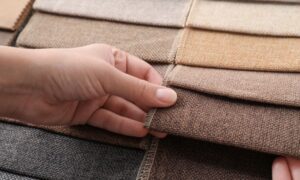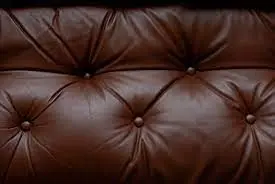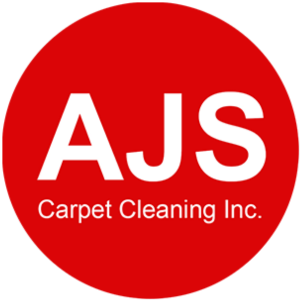How to Clean Upholstery: A Comprehensive Guide
How to Clean Upholstery: A Comprehensive Guide
A Comprehensive Guide
Upholstery cleaning is a secret weapon in the battle against dingy furniture! Keeping your upholstery clean is key to preserving its beauty and extending its lifespan. And we’re here to show you how!

We’ll arm you with all the tips and tricks you need to tackle any stain, no matter how stubborn. From red wine to chocolate to pet stains, we’ve got you covered. So, whether you’re a seasoned cleaning pro or a novice just starting out, our guide will be your go-to resource for keeping your upholstery looking its best.
Get ready to transform your furniture and breathe new life into your living space! In this guide, we’ll be your trusty sidekick, walking you through the process of tackling every type of stain and grime. With our help, you’ll have your furniture looking and feeling like new in no time!
Basic steps in upholstery cleaning:
Inspection:
Inspect the upholstery to determine the type of fabric, soil level, and any potential cleaning issues.
Before starting to clean, a thorough inspection of the upholstery is necessary. This helps the cleaner to classify the fabric and identify the type of dirt and grime or stain present. All this information is crucial in choosing the appropriate cleaning approach and determining the ideal cleaning solution to be used.
Pretreatment:
This step must be done before any general cleaning is begun.
In the pretreatment stage you treat and remove all the stains you can. This is because sometimes the stain removal solvent will react adversely with your general purpose solvent and make it ineffective.
No matter what kind of stain it is, there is a solvent and process for it. That does not mean that 100% of stains can be removed. Some stains are permanent. That means that they have become bonded to the fibers of the fabric and will not be removed.

Author
Victor Nugent
Owner and President of AJS Carpet Cleaning, Inc. with over 20 years experience in the Carpet Cleaning business
Recent Posts
Categories
Have Any Question?
Please feel free to contact us if you need any further information
-
Call (801) 368-0705 -
[email protected]

But there is a specific type of solvent or process for each kind of stain. And there is no single solvent that will remove all stains. The general rule is that organic stains will be dissolved in organic solvents, and inorganic stains are soluble in inorganic solvents.
Read the labels on all cleaning chemicals before you use them.
Another useful tip is to test your solvents in an inconspicuous place first to avoid damage to the fabric.
If you cannot remove the stains with traditional or conventional solvents and methods, consult a professional.
Vacuuming:
Vacuum the upholstery to remove loose soil and debris.
A handheld or portable vacuum with a brush attachment would be suitable. Look for a vacuum with adjustable suction power and a brush attachment for removing dirt and pet hair from upholstery surfaces. Some examples are the Dyson cord-free vacuums, or the Bissell Multi Reach Cordless Vacuum.
Cleaning:
After the type of fabric is determined, the cleaning method must be chosen.
There are two common upholstery cleaning methods used in Utah: steam cleaning and dry cleaning.

Residential Upholstery Cleaning
Steam cleaning involves using a hot, steaming cleaning solution, but it requires caution as some fabrics can be vulnerable to damage from the heat and moisture. On the other hand, dry cleaning employs organic solvents to eliminate dirt and stains, but with a gentler touch. However, certain natural fibers like cotton, wool or silk may be damaged by solvents.
Some chemicals can also have adverse effects on the environment.
The key to a successful upholstery cleaning is to select the appropriate method for your fabric type. Be mindful of the pros and cons associated with each method to ensure a safe and effective cleaning experience.
Rinsing:
Rinse the fabric thoroughly to remove cleaning solution and any remaining dirt.
If the fabric is delicate, it is recommended that you do not attempt to clean it. Instead, call a professional upholstery cleaner.
Drying:
Allow the upholstery to air dry completely or use fans to speed up the process.
Final inspection:
Inspect the upholstery to ensure it is cleaned to your satisfaction.
Tools and Supplies to clean upholstery
Before you s tart cleaning, you’ll need to gather a few tools and supplies. These may include:
tart cleaning, you’ll need to gather a few tools and supplies. These may include:
Vacuum cleaner with a brush attachment
Clean, white cloths
Cleaning solution (store-bought or homemade)
Sponge or scrub brush
Soft-bristled brush
Dry cleaning solvent
Talcum powder or cornstarch
Before you attempt to clean your upholstery, check the label for care instructions.
Preparation
Before you attempt to clean your upholstery, check the label for care instructions.
Look for symbols or text that indicate the recommended cleaning method. The letter “W” stands for “water-based cleaning,” “S” for “solvent cleaning,” and “X” for “vacuum only.” If there are no symbols or text, you may need to check the manufacturer’s website or contact them directly for care instructions.
Cleaning Different Types of Upholstery
Microfiber
 Microfiber is a popular choice for upholstery in Utah. It looks great, is durable and easy to clean. Follow the simple instructions below to clean microfiber upholstery.
Microfiber is a popular choice for upholstery in Utah. It looks great, is durable and easy to clean. Follow the simple instructions below to clean microfiber upholstery.
Apply a small amount of cleaning solution to the sponge or scrub brush and work it into the stained area.
Blot the area with a clean, white cloth to remove the stain.
Repeat until all soils and the stains are gone.
Other synthetic Fibers
Advanced types of synthetic fibers used in upholstery today are designed to be more durable, resistant to stains, and easier to clean than their predecessors.
Gone are the days of dull and easily stained upholstery. Today’s synthetic fibers have revolutionized the world of furniture and interior design. These fibers boast a range of benefits, including durability, stain resistance, and ease of maintenance.
Take polyester fibers, for instance. They are the epitome of resilience, shrugging off wrinkles and stubborn stains with ease. Whether in homes or commercial settings, polyester upholstery fabrics are a popular choice, thanks to their low-maintenance nature. Simply use soap and water to keep them looking their best.
Nylon fibers, on the other hand, are a powerhouse of strength and durability. They also stand up well against stains and moisture, making them an excellent choice for high-traffic areas. Keeping them clean is a breeze – a mild detergent solution and a damp cloth are all you need.
 For those seeking a fabric that is quick-drying and resistant to moisture, olefin fibers fit the bill. They are also highly resistant to fading and stains, making them ideal for upholstery that is frequently exposed to spills or moisture.
For those seeking a fabric that is quick-drying and resistant to moisture, olefin fibers fit the bill. They are also highly resistant to fading and stains, making them ideal for upholstery that is frequently exposed to spills or moisture.
Acrylic fibers are the perfect choice for those who appreciate a soft touch. These fibers are not only durable, but also resistant to mildew, fading, and stains. Cleaning is a cinch, as a simple soap and water solution does the trick.
Standard cleaning procedures described here, with the usual cautions, are appropriate for these.
Leather
The procedure for cleaning leather upholstery is different from that for other types of fabric.
 Different types of leather may have different cleaning requirements, so it’s best to check the manufacturer’s guidelines or consult a professional before attempting to clean it on your own. Additionally, you should test the cleaning solution on a small, inconspicuous area first to make sure it won’t damage the leather.
Different types of leather may have different cleaning requirements, so it’s best to check the manufacturer’s guidelines or consult a professional before attempting to clean it on your own. Additionally, you should test the cleaning solution on a small, inconspicuous area first to make sure it won’t damage the leather.
Always avoid using harsh chemicals or abrasive materials, as they can damage the leather.
You can obtain leather cleaning solutions from several sources, including:
Furniture or leather goods stores: They often sell specialized cleaning products that are specifically designed for leather upholstery.
Online retailers: You can purchase leather cleaning solutions from online stores that specialize in furniture or cleaning products.
Supermarkets: Some supermarkets carry leather cleaning solutions in their cleaning aisle.
DIY stores: You can also find leather cleaning solutions at DIY stores.
It’s important to check the product label and make sure that the solution is appropriate for your specific type of leather. You may also want to check the manufacturer’s guidelines for the upholstery to ensure that the solution won’t damage it. If you’re unsure, it’s best to consult a professional or ask for advice from a specialist at a furniture or leather goods store.
Apply the leather cleaning solution to the clean cloth and work it into the stained area.
Use the soft-bristled brush to scrub the area.
Wipe the area clean with a clean, white cloth and dry completely.
Natural Fabrics
It is extremely important to check any care label on the upholstery before attempting any cleaning. Additionally, it’s important to use a white cloth when cleaning to avoid color transfer. Dyes in colored cloths may bleed onto the fabric. and cause additional problems.
 Also, avoid using too much water as it could result in water damage or mold growth.
Also, avoid using too much water as it could result in water damage or mold growth.
Here is the procedure recommended for cleaning natural fabrics, such as cotton, linen, and wool.
Mix a small amount of detergent into the bowl of warm water.
Dip the clean cloth into the solution and wring out any excess water. Work the solution into the stained area, using the soft-bristled brush if necessary.
Blot the area with a clean, white cloth to remove the stain.
Repeat until the soils and staining is gone.
Maintenance
Follow a regular cleaning schedule to keep your upholstery looking good.
Vacuum regularly and spot clean as necessary.
Get your upholstery cleaned by a professional cleaning company at least once per year. This is the recommendation of most experts and the major fabric manufacturers. It will not only extend the life of your upholstery fabric, but also satisfy the manufacturer’s warranty stipulations.
With a little bit of effort and attention to detail, you can keep your upholstery looking clean and fresh for years to come.
We hope this comprehensive guide has provided you with the information and guidance you need to get started.
For help with professional upholstery cleaning call us at: 801-368-0705
https://youtu.be/fOuoM50o94c
Click below to like and share if you found this article helpful.
